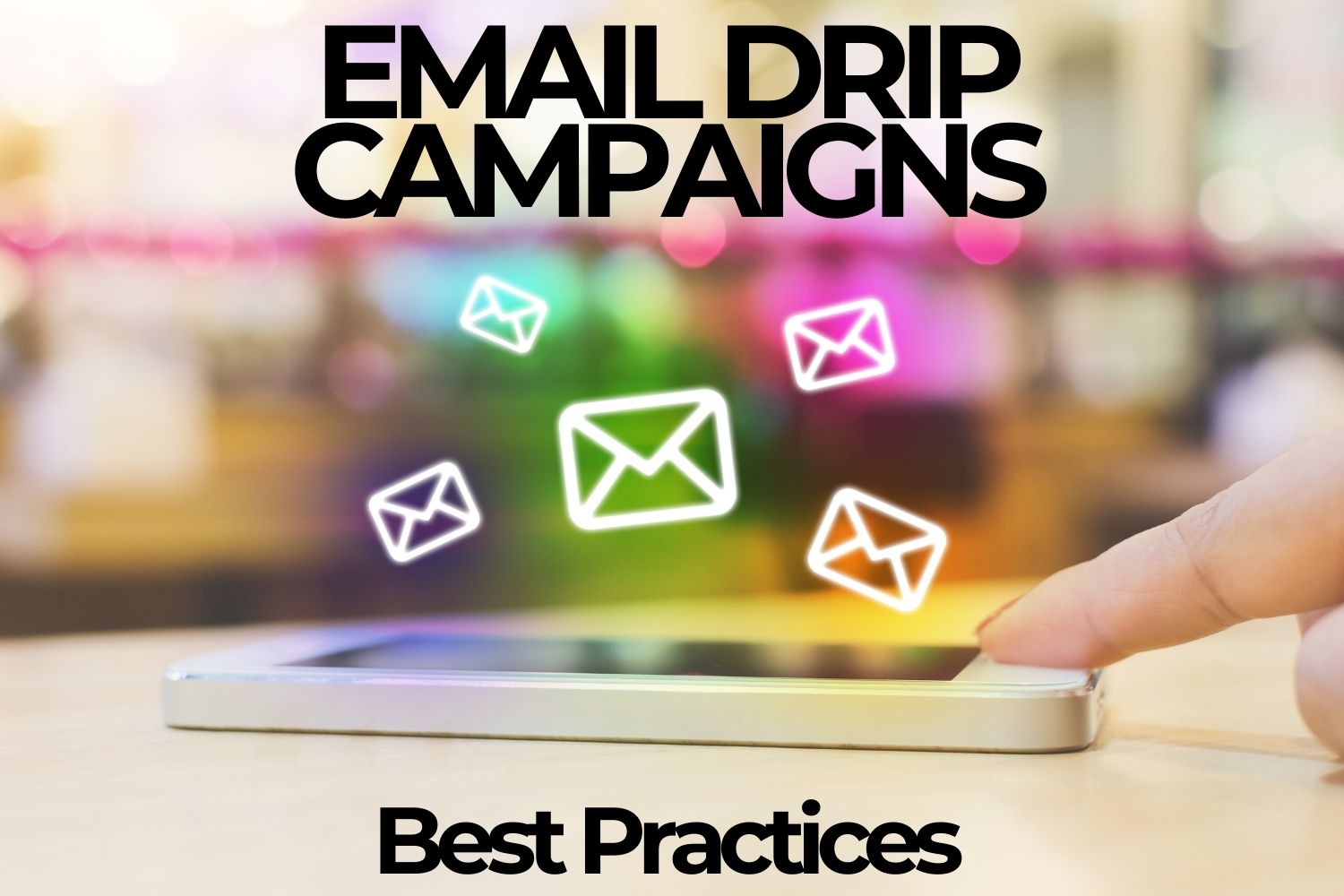Let’s jump right into some of the reasons digital marketing is such a force:
- You can measure nearly every tactic you try in one way or another. Essentially, you know what is and isn’t working.
- There’s a DIY approach for nearly every tactic, too.
- Budget need not be an issue. It’s easy to start small and control your spend.
- You can adjust on the fly.
A logical conclusion is: digital marketing is only expensive when it’s not working. So, it’s always a good time to scrutinize your goals, and performance metrics, and adopt new strategies. Let’s take a dive into a variety of ways your company can make smart moves while keeping a handle on the budget. You’re bound to find an idea here that you can quickly put into play.
Smart ideas for your website
1. Improve your homepage
Let’s begin by scrutinizing your homepage headline, the most important line on the most important page of your website, which is your most important digital marketing asset.
It must make a powerful first impression by quickly assuring visitors they have come to the right place for the challenge they face. Your homepage headline, subheadline, and the hero shot or header design in which they’re presented, should promise a transformation from having a problem to having the power to overcome it.
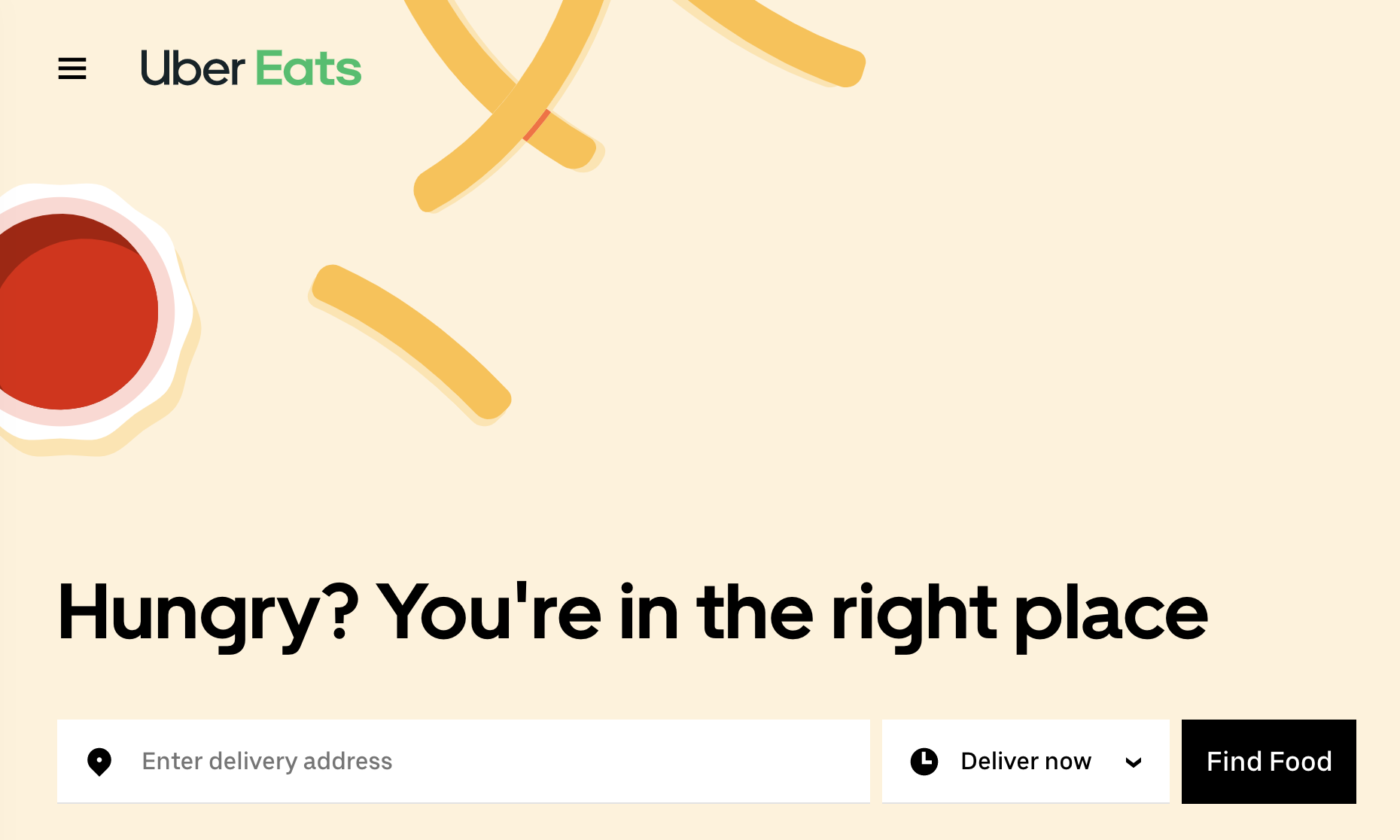
I’m hungry. I gather UberEats can solve my problem.
It’s also quite clear what this hungry fella’ is supposed to do next.
Does your homepage immediately get to the point like this?
Take a hard look at your homepage headline. Test a new idea. Here are some additional fixes you might consider for your homepage:
- User navigation—Is it obvious how to find stuff or where to get started? Is the menu clear and concise?
- Brevity—The objective of your homepage is to steer prospects to another page. Consider the very real possibility that your homepage presents too much information. If so, prune it. Less sections. Shorter copy. More suspense.
- Calls-to-action—Do your offers come through loud and clear?
This checklist will give you more ideas about composing a smart homepage.
2. Update your website’s design
If it’s been several years since you last updated your website, it may be lagging in one or more ways. It could be serving too slowly, limiting your creative options, looking a bit dated, or backdating your branding.
If your site’s based on WordPress a theme change may be all that’s required to apply an attractive new coat of paint. Consider the various design elements of your website such as its fonts, color scheme, and layout to determine what does and doesn’t need revision.
3. Introduce a new feature or section
You might make a simple upgrade to your site by adding a new feature or section. I can’t tell you what it should be, but if you click around your competitors’ sites or sites you like, you’re bound to uncover something useful and cool. Here are 10 ideas that jump to mind:
- Customers—Testimonials and case studies go here. Done that?
- Gallery or portfolio—Are you showing off what you produce or how customers use your products and services?
- Glossary—This is a cool feature I see often see on B2B sites.
- Social feed—Showcasing social feeds make sense for a variety of businesses in a variety of ways.
- Tools—If you’ve developed any kind of content that can be considered tools, it may be time to showcase them in its own section.
- Team—This is a common website section, of course, but not every business offers it and those that do often publish dreadfully boring content that reads like a bunch of consolidated resumes. Have fun with it.
- Careers—Are you growing? Even if you’re not, maybe you’d like to have a pool of candidates ready to go when the need strikes.
- Press/media—Perhaps you’ve made some strides getting noteworthy media coverage and haven’t created a showcase for it.
- Blog—This is the age of content marketing. As they say, if you didn’t start blogging 10 years ago, today is the second-best time to start.
- Resources/hub—Your content ideas may expand beyond the blog or consist of stuff that’s not only articles. A resources page or content hub is a smart place to offer videos, webinars, eBooks, or any digital asset.
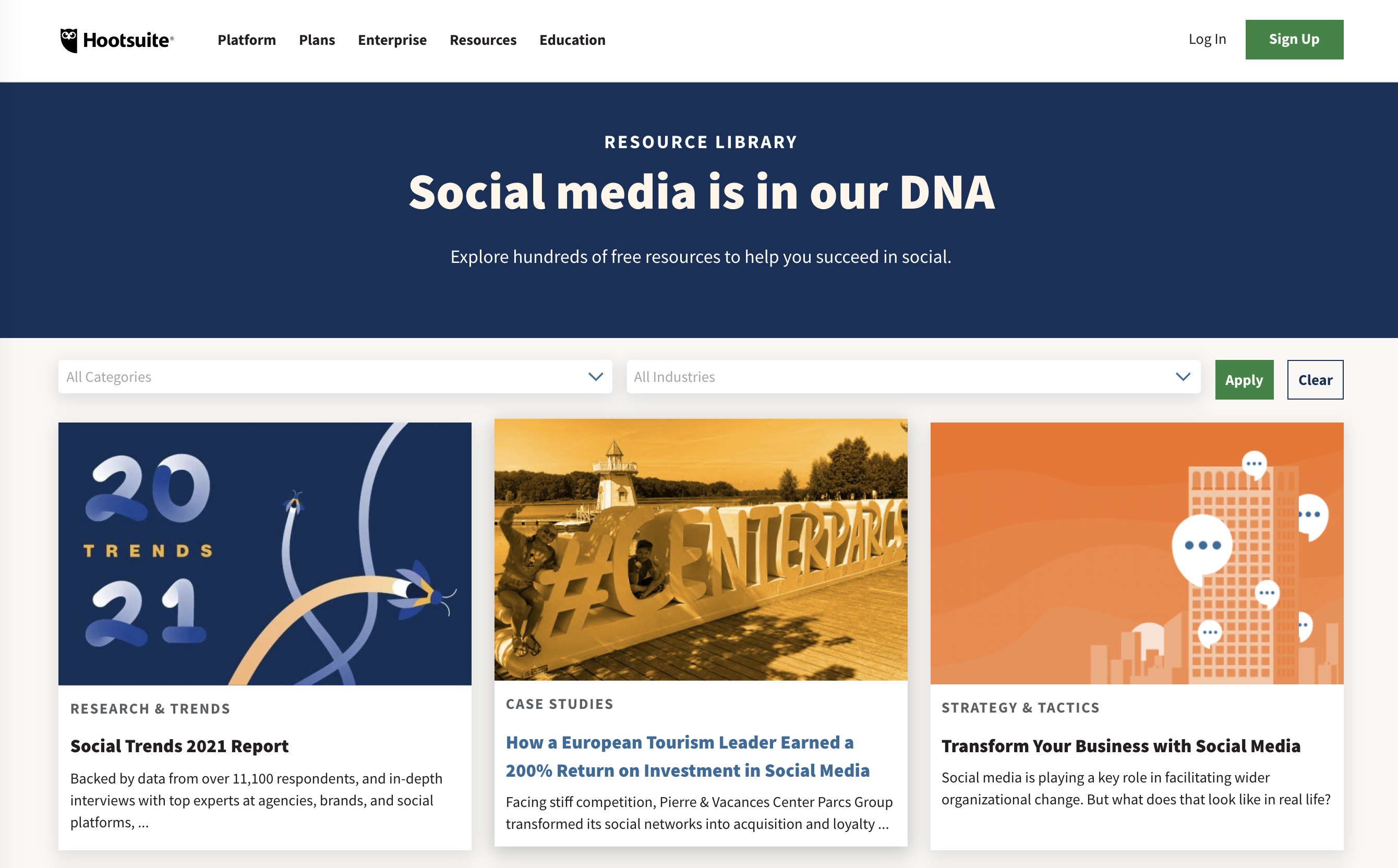
Granted, it probably wasn’t inexpensive for Hootsuite to offer “hundreds of free resources” (like it says above),
but the resources section of their website probably began with just a few of them.
4. Develop a new (or your first) website
Skip forward if you have a website and it’s producing the results you need.
If you don’t have a website, the time has come. Though you may be convinced website creation is a big time and money-consuming endeavor, it doesn’t have to be. Most clients I work with on websites opt to develop their site on WordPress, which can deliver a plethora of shortcuts, but there are easier ways to go.

In recent months, I developed websites quickly and inexpensively for a non-profit (shown above) and a musical artist (my daughter) with Wix. Platforms such as Wix, Weebly, Squarespace, and others make it insanely efficient to quickly put together a great-looking site—and they’re more feature-rich than years past.
Smart ideas for your content marketing
5. Clean house
If you’ve been blogging or populating your site with content for several years, it may be time to audit your website’s content and trim the fat. Old content might actually be a drag on your site’s authority. With a little help from their friend (that’d be me), my friends at ToThe Web created a helpful guide to conducting a content audit.
6. Update old content
Your content audit is likely to reveal content that once made a mark, but its effect has fizzled. Perhaps some of it’s outdated. But if it used to draw eyeballs, it’s likely to have earned some links, and it could even rank high on search.
Don’t trash content such as this. Update and republish it. Check your facts, lists, links, images, and every possible “dated” detail. Maybe add or subtract sections and ideas. And, of course, when it’s shiny and new, promote it all over again.
(Note to self: take your own advice on tip #6 this year.)
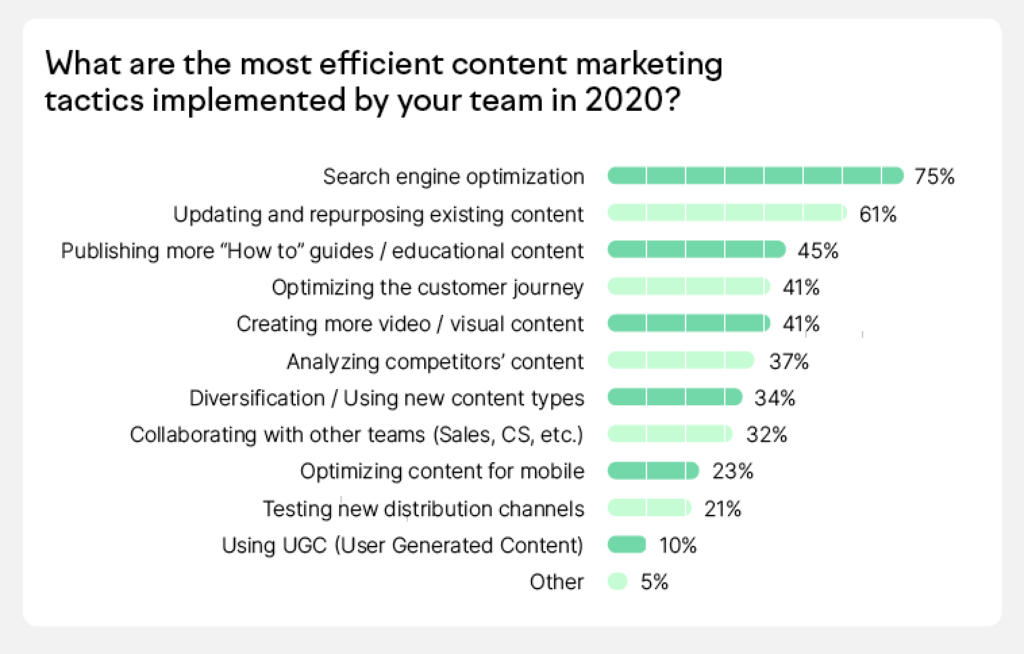
Research findings from The State of Content Marketing 2020 Global Report, by SEMRush, reveals updating and repurposing existing content are the number two and three most efficient tactics.
7. Repurpose existing content
You’re only creating content that makes a ding in your universe if you’re pouring time into it. So, it’s wise to ask yourself, “Have you extracted all the value you can from it?” Do so by repurposing content that’s proven effective.
I’m talking about a serious time-saver here. Consider, for example, how easy it could be to repurpose a list post as an infographic, a webinar as an email series, a series of interviews as an ebook, etc. But in addition to pumping up the volume of your content with less effort, you’re also testing new waters with various content formats and media outlets, which will ultimately expand your reach.

Content in the form of lists are supremely primed for repurposing.
Above is a snapshot from an example of repurposable content I’ve used as a blog post,
infographic, presentation, webinar and the focal point of guest posts.
8. Develop useful tools
While nearly every content marketer focuses on the bare bones with a blog, few apply their efforts to offer simple tools such as templates, checklists, and assessments. Think about it this way: prospects are forever searching for these things. They do searches such as “How do I….” and “What’s the best way to…” and “(Blank) template” (or tool).
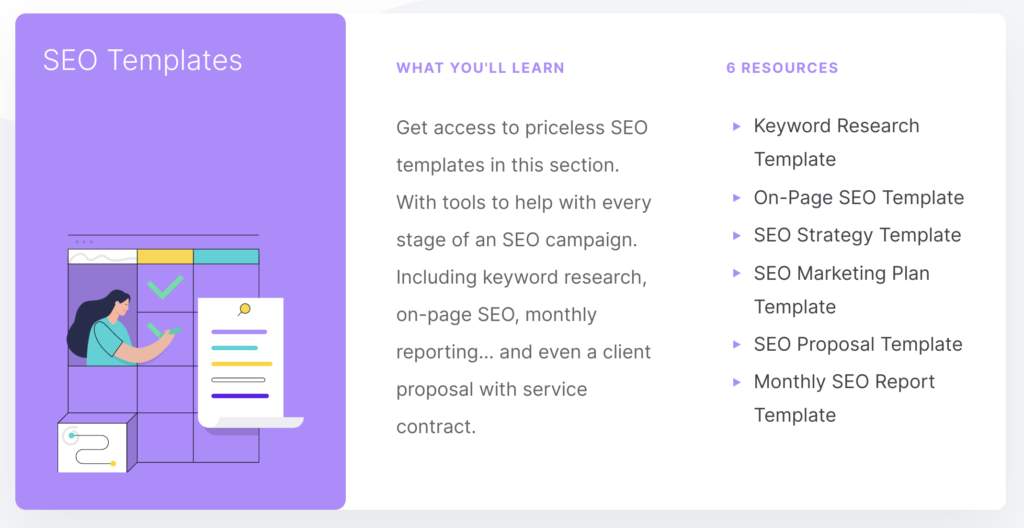
Here’s a thing of beauty from Backlinko (and I’ve only shown one-fifth of it).
The SEO templates offered are the first of five collections of templates.
I did a search for “keyword research template” and Backlinko ranked first.
It may have taken a good bit of work to create these resources, but the ROI gained will surely
qualify this tactic as “inexpensive and smart.”
9. Host a webinar
Webinars can deliver wide reach cost-effectively and remain an asset afterwards. Once again, they ranked in the top three tactics for both securing and converting leads for B2B brands, according to Content Marketing Institute.
10. Create a podcast
The age of multitasking has arrived. Though we’ve witnessed a decline in commuting to work, for obvious reasons, droves of content consumers are taking in content via their ears as they jog and walk. And so, consumption for audio books, courses, and podcasts keeps climbing.
Podcasts are relatively easy and inexpensive to create. Business.com claims that podcasts:
- Capture your audience’s attention
- Create a personalized experience
- Help build and maintain network connections
- Open up new financial possibilities
- Position yourself as a leader in your industry
Smart ideas for your email marketing
11. Deliver a welcome series
A surprising percentage of brands don’t greet new email subscribers with a welcome email or series. That strikes me as (1) an opportunity lost and (2) kind of rude. Not sending welcome email is to ignore a new prospect when their interest level is potentially at its highest, a missed chance to teach them more about your solutions, and to simply connect.
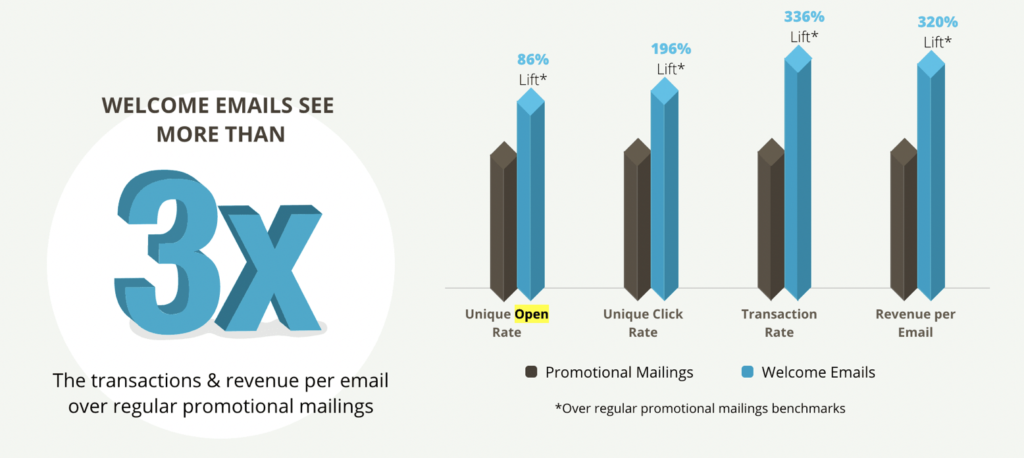
Get this: welcome emails multiply transactions and revenue per email by 3X.
If you haven’t yet put this strategy in play, read this post I wrote for Orbit Media to learn more about why a welcome email series is smart marketing, how to get started, and what to feature in your emails.
12. Begin segmenting your email list
Many businesses offer all email subscribers the same content. This lazy approach backfires in the form of low engagement and losing subscribers.
Segmenting your email list divides your subscribers into smaller segments based on criteria you dictate. Then, you have the opportunity to deliver more relevant email based on location, interests, gender, purchase history, and more. MailChimp research indicates segmented campaigns produce a 100% increase in clicks.
13. Offer an email course
Let’s assume you have established some good cred in your “know zone.” Now, if you use the word “course,” some percentage of your subscribers may consider whipping out their credit cards to get it.
But what if you offered a free course? It’s likely to pull in a big way. And it need not be fancy. You can simply drip emails forth over a week, or month, or more. Essentially, the idea is to take a valuable lesson you’re qualified to deliver—or already have delivered—and serve it up as bite-size pieces.

An email course is easy and inexpensive to setup and deliver and a great way to attract new subscribers or stay connected to the ones you already have.
Smart ideas to expand your digital footprint
14. Contribute guest posts
Neil Patel claims guest blogging is the best inbound marketing strategy. Though it may seem counterintuitive to publish your best work on other blogs, the benefits of contributing guest posts to relevant publishers can be enormous.
First and foremost, when you land a guest gig on a popular site, you expand your reach and increase the chance of driving quality traffic to your site (read: potential new subscribers). You position yourself as an expert in your niche and build meaningful relationships with other prominent people and brands.
My blog is targeted by wanna-be guest bloggers multiple times every day—but terribly. If you’d like to drastically lower your rejection rate, read my post How to Land Meaningful Guest Blogging Opportunities.
15. Run ads on social media channels
Look at some of the numbers from 2020 research by Hootsuite and We Are Social…
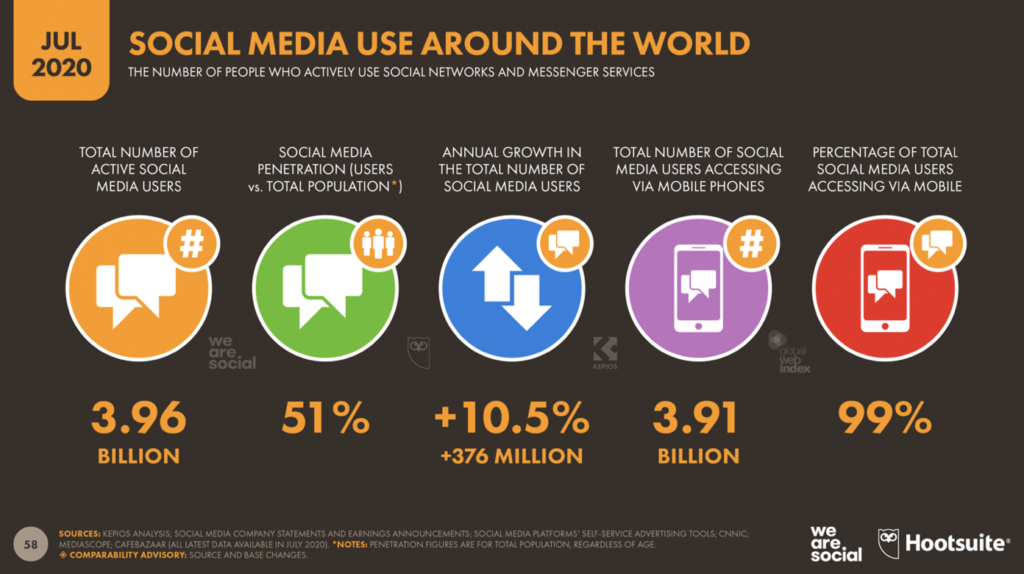
Two simple conclusions: a majority of the world’s population are now active on social media and nearly all of them access it via mobile.
Now, look at this data from a report by GlobalWebIndex…
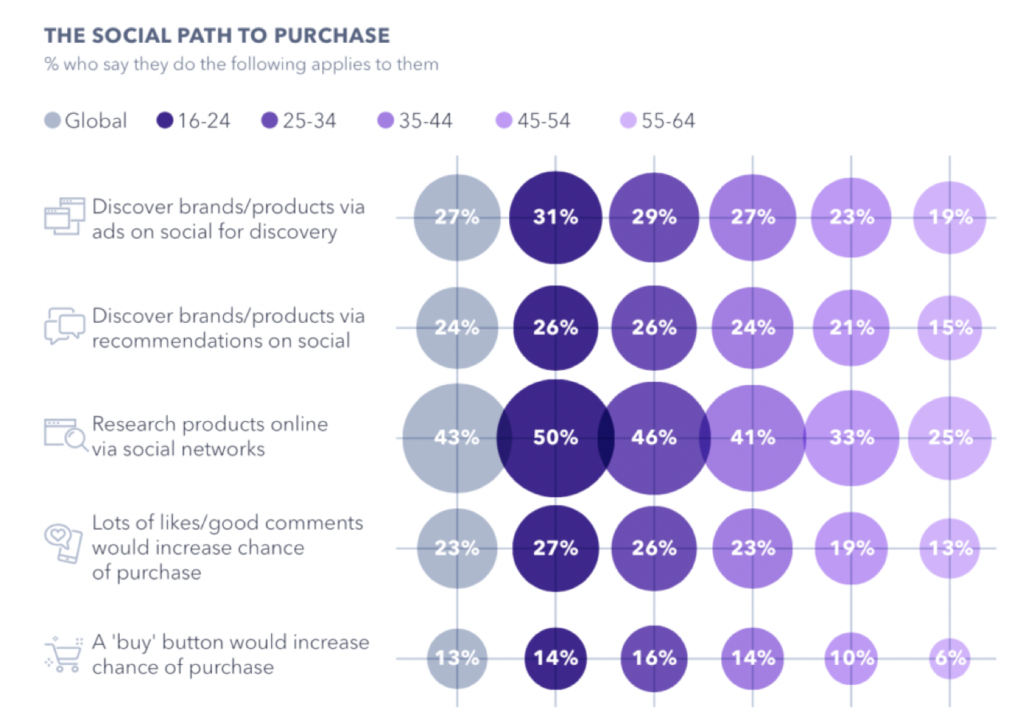
Peruse the numbers above and you’ll find some telling insights about why social media advertising is exploding. Social media advertising enables you to laser-target your ads and attract new customers. You can get started with a small budget, closely track ROAS (return on ad spend), and scale your campaigns when you identify the campaigns and media that deliver the best results.
It’s a big topic, so I’ll steer you to the most recent and thorough guide to social media advertising I’ve found here (from Hootsuite).
16. Dive deeper into one social channel
If you’re not realizing the results you seek via social media there’s a good chance you’re spreading your efforts thinly across numerous channels. Consider setting a few of them aside, at least in the near-term, and focusing solely on the one where you’re most likely to produce results.
If the question then becomes, “Which one?” your challenge is to develop buyer personas and identify the social channel that best aligns with your most promising persona.
Additionally, you can examine how your competitors use social media, conduct a customer survey, and examine your analytics. The process is likely to be easier than you think and the outcome is unlikely to be surprising. Sprout Social offers many tips for this process here.
17. Try live streaming
Livestreaming on social media appeared to take-off in a big way when Periscope caught on in 2015, but then, stalled a bit in subsequent years. The lockdown era that began in early 2020 appears to have given the tactic new life.
“Live streaming is dynamic, authentic and engaging,” writes Stacey McLachlan in her Ultimate Guide on Hootsuite. “The best part is that you don’t need any special equipment or tools to tap into the world of self-broadcasting, she adds. “Streaming is for everyone, especially businesses looking to connect with their customers in real time.”
18. Improve your visual content
You battle for attention in the war zone that is social media and like most, you’ve come to find engagement is increasingly elusive. Recent data from RivalIQ puts average Facebook engagement at .09%.
Text-based posts won’t cut it, so the vast majority of marketers rely on visuals to draw attention to their posts. However, most lack the skills to consistently create engaging visuals, so they offer-up easy-to-get, easy-to-ignore stock photography.
However, there are now a mesmerizing array of low-cost (and fun) tools for creating more intriguing visual marketing, which don’t require the skills of a professional designer.
View this post on Instagram
- Look to an app provider such as the award-winning Lightricks to make crazy cool images, cinemagraphs (like the example above), and short videos.
- Unfold will make it remarkably easy to add a pro shine on your social media stories.
- Free accounts with services like Canva and Crello, which supply thousands of templates, will advance your visuals in a big way with a just a few clicks.
- If you want to include infographics and presentations in your mix I recommend Visme or Venngage.
- Also, consider adding subtitles to your videos and trying alternative approaches such as creating carousels.
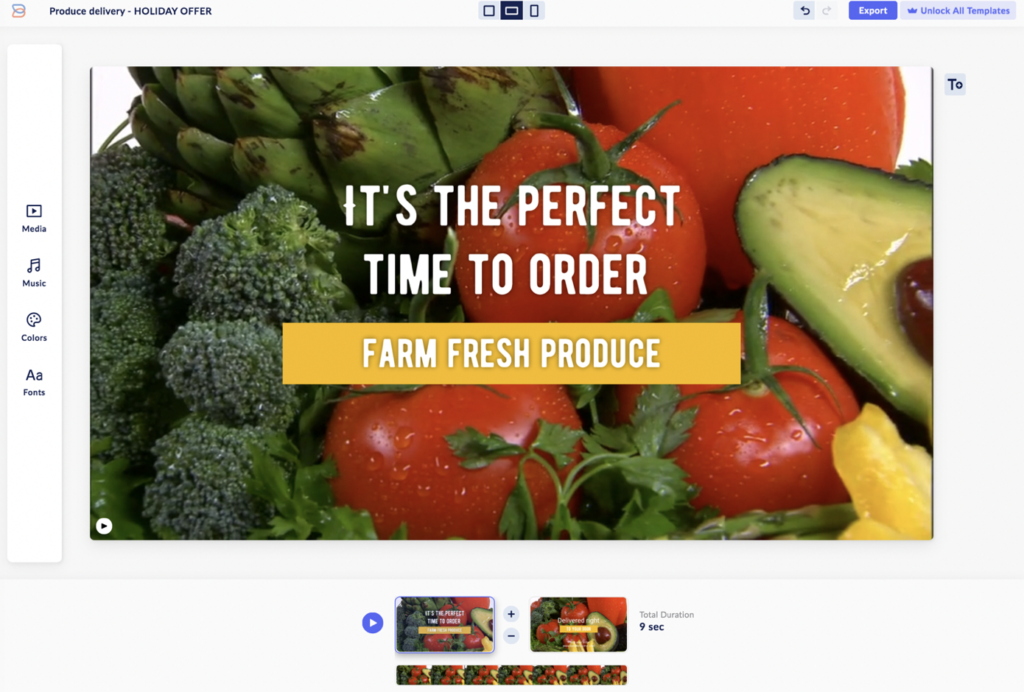
Boosted is a web and mobile app that makes it insanely simple to quickly create one-shot video ads for social media.
It’s ideal for promoting a product, sale, event, and more.
Smart ideas to improve your productivity
19. Adapt some time-saving tools
We’re all guilty of doing our work the way we know how instead of embracing efficient shortcuts. Maybe you waste a time with…
- Monitoring social media and posting
- Gathering analytics
- Tracking links and rankings
- Proofreading copy
- Researching keywords
- Managing projects and scheduling
- Sharing content and ideas and archiving them
These are just a few examples. Whatever it may be, a shortcut is out there. There’s an app for that, as they say. Examine how your time is spent tackling the tasks you’re responsible for and make a vow to yourself to research, try and adapt a new time-saving tool or two this year.

Oh, how I love Keywords Everywhere, an inexpensive tool that saves me a ton of time when I do keyword research.
20. Cut something out
What should we call the digital marketer’s obsession with trying to do everything, every day, everywhere possible? Unhealthy? Unreasonable? Unfair?
I think we should call it unproductive. You’re doing too much. I hereby declare your New Year’s resolution is to cut something out.
21. Learn a new skill
Though I’ve hit on the theme a few times now that “thin doesn’t win” and suggested some “get leaner and meaner” strategies, I want to conclude by recommending this is the year you learn to master a new skill.
Make it something that matters. Add together the many ingredients of digital marketing in the 20s and you have a fairly complex recipe. But it’s important to recognize that recipe is different than the previous decade (or even year). So try to step outside of your daily to-do list for a moment, revisit your objectives, prioritize them as well as you can, and see if you can identify a skill you can use to improve your productivity.




